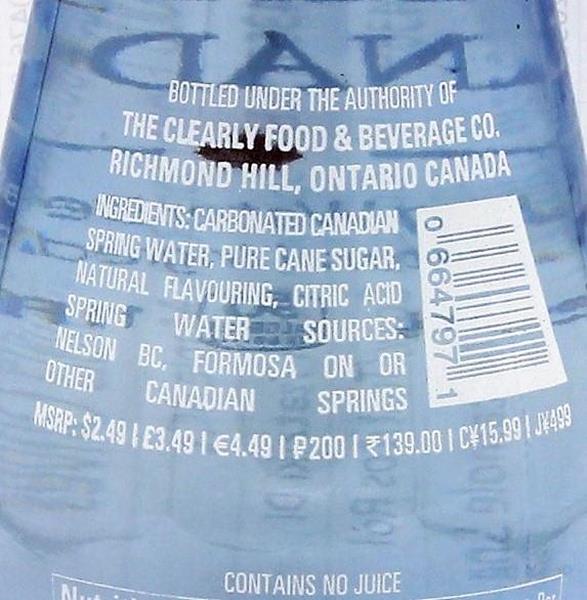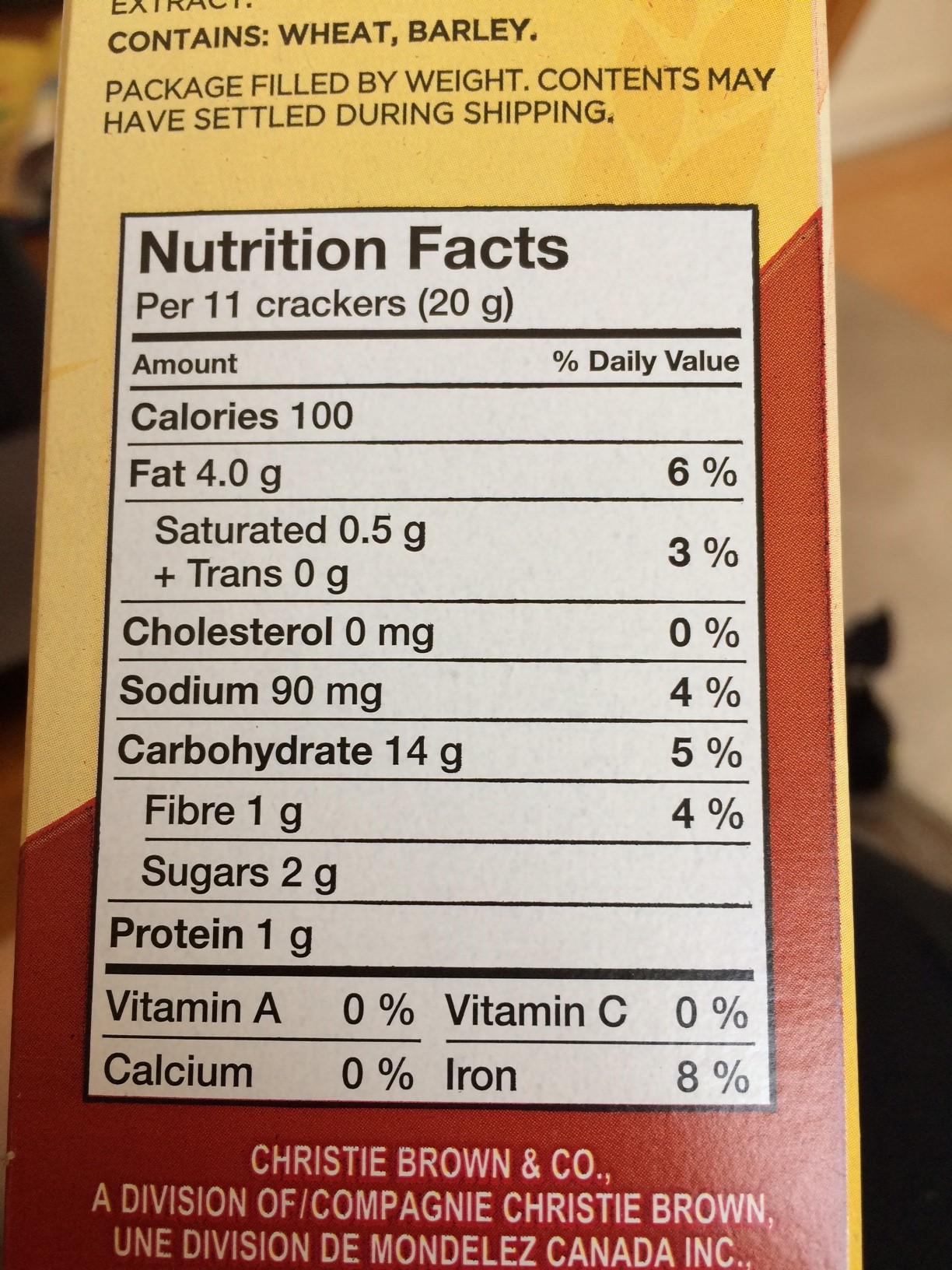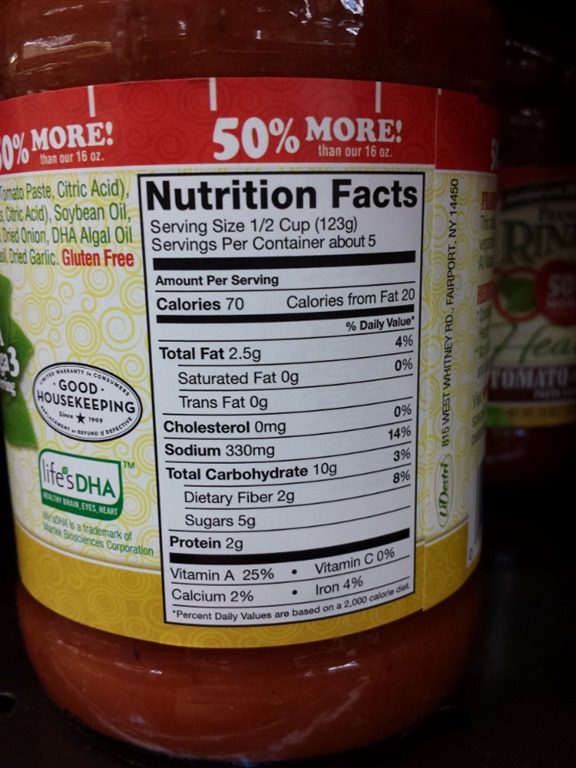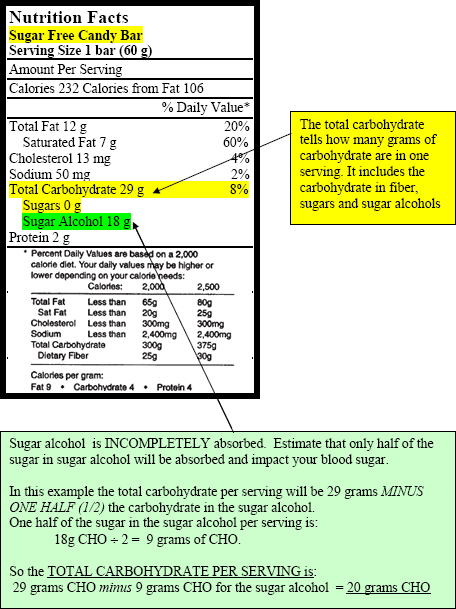44 how to read nutrition labels for added sugar
How to Identify Sugar on Nutrition Labels | Days To Fitness Step 3 - Compare the sugar content of similar food products. A very effective way to see how much sugar is in the food you are eating is to compare product labels side by side. For example, take a no-added-sugar cereal and a regular breakfast cereal and compare total sugar per same-sized serving. You'll often be surprised at the difference. How to Read a Label - Natural Sugar versus Added Sugar You can tell them apart by reading the list of INGREDIENTS on the label just under the Nutrition Facts box. Locate the *Ingredients* list on the food label. Trick is to differentiate between ingredients that add sugar (high fructose corn syrup or sucrose) and ingredients that have natural sugar that is inherent in the raw or base food.
How to Read the New Food Label Total sugars included natural sugar from milk and/or fruit and added sugars. There was no way to tell if sugars were natural or added unless you read the ingredient list. On the new label, added sugars are listed under total sugars. The word "includes" is used before added sugars to indicate they are already included the grams of total sugars.

How to read nutrition labels for added sugar
Learning To Read Labels - Diabetes Education Online On a nutrition food label, subtract the fiber from the total carbohydrate amount. When you read food labels, the grams of sugar are already included in the total carbohydrate amount, so you do not need to count this sugar amount separately. The grams of sugar listed include both natural sugars, from fruit or milk, and added sugars. Understanding food labels - Action on Sugar Step 1 - Calculate amount of sugars per gram by dividing the amount of sugars per 100g OR 100ml by 100. Step 2 - Check the weight of a recommended portion as stated on the pack. Step 3 - Work out the amount of there is per portion by multiplying the figures from step 1 and 2. Reading Food Labels | ADA - American Diabetes Association Put food labels to work. The Nutrition Facts labels on foods are really the key to making the best choices. We'll cover the basics so that these labels make shopping easier for you. You've heard it all. From carb-free to low-carb, to whole and empty carbs, it's hard to know what it all means. Blood sugar highs and lows aren't always ...
How to read nutrition labels for added sugar. How to read labels for added sugar - That Sugar Movement Technically, 4.2g = 1 teaspoon of sugar, but for the easy on-the-spot calculation, just remember 4g equals one teaspoon. For example, a 375ml can of Coca-Cola is about 40g of sugar. Dividing that by 4 means there are 10 teaspoons of added sugar in the one can. Added Sugars on the New Nutrition Facts Label | FDA Labels for foods and beverages with added sugars will list the number of grams and the percent Daily Value (%DV) for added sugars within the Nutrition Facts label. Having the word "includes" before... 5 ways to spot added sugars on food labels - Tryon Medical Partners Raw sugar 2. Look for the word "includes" Recently, the Food and Drug Administration mandated that manufacturers must list added sugars in grams and as a percentage of the Daily Value. Now food labels have the word "includes" before added sugars to indicate that added sugars are included in the number of grams of total sugars in the product. 3. How to Read Labels for Added Sugar | Naturally Savvy So, to get a better idea of how much added sugar there is requires a bit of label sleuthing. Here are all the many types of sugar and their various names to hunt out in an ingredient list: Anhydrous dextrose Barley malt Beet sugar Brown sugar Cane juice crystals Cane sugar Caramel Corn sweetener Corn syrup Corn syrup solids Confectioner's sugar
Sugar and Food Labels: What to Look For - PartnerMD But mainly look for -ose. That's the first thing. Then we have corn sweetener, corn syrup, fruit juice concentrates, invert sugar, high fructose corn syrup, malt syrup, Florida Crystals, corn syrup solids, malt syrup, barley malt, agave nectar, caramel treacle, molasses, carob syrup. You can find additional names for sugars online. How to read the new nutrition label: 6 things you need to know University of California food experts praised the labeling changes and offered six key takeaways. 1. Listing added sugar is the most important label change. Laura Schmidt The new label will list the amount of added sugar in a product, both in grams and as a percentage of the daily recommended allowance. How to Read Carbohydrates on Food Labels - GlycoLeap Low: 5 g of total sugars or less per 100 g A simpler way to detect high sugar products is to scan through the ingredients list. Make sure that sugar is not on the first 3 ingredients. The lower it is on the ingredients list, the better. Understanding Food Nutrition Labels - American Heart Association Not all fats are bad , and total sugars can include both natural and added sugars. Limit the amounts of added sugars , saturated fat and sodium you eat, and avoid trans fat. When choosing among different brands or similar products, compare labels and choose foods with less of these nutrients when possible.. 4 - Get enough of the beneficial ...
How to Read a Food Label: The Search for Added Sugars The only way to tell if something has added sugars is to check the ingredients list. This part takes a bit of memory. In order to know what to look for, you will need to memorize the main culprits—or write them in your phone if there's no way you're fitting another bit of info in that brain of yours! How to Read a Food Label to Make Sure It's Keto in 3 Easy Steps Subtract Dietary Fiber and Sugar Alcohols (if any) from the Total Carbohydrate. *Total Carbohydrate minus Dietary Fiber, minus Sugar Alcohol (if any) = Net Carbs Total Carbohydrate ( 4 grams) - Dietary Fiber ( 1 gram) = 3 gram s Net Carbs The Total Carbs for ⅔ cup of this packaged cauliflower is 4 grams, and the Net Carb is 3 grams. Why the 2 camps How To Read Food labels for Sugar | My Sugar Free Kitchen On the label check the sugars in the nutrition panel. 5g/ml or less of sugar per 100g/ml = this would count as low sugar content. It means 5% of the ingredients are sugar Between 5g/ml and 20g/ml of sugar per 100 grams = medium sugar content. With 20ml of sugar per 100 ml, this means the product is 20% sugar…not so good. Food labels - NHS Nutrition labels are often displayed as a panel or grid on the back or side of packaging. This type of label includes information on energy (kJ/kcal), fat, saturates (saturated fat), carbohydrate, sugars, protein and salt. It may also provide additional information on certain nutrients, such as fibre.

Why an 'Added Sugar' Label is Coming and How it Might Help You Lose Weight - RateMDs Health News
How to Find the Added Sugars Follow these steps: Divide the total grams of sugar listed on a Nutrition Facts label by 4. (4 grams of sugar = 1 teaspoon of sugar) For example: A sugary drink can have 65 grams of sugar in one serving. 1. 65 grams of sugar ÷ 4 = 16 ¼ teaspoons of sugar in one serving. Many store-bought drinks contain more than one serving.
How to read a nutrition label, from serving size and added sugars to ... So added sugars are now listed on nutrition labels. Added sugars include: Sugars that are added during the processing of foods (sucrose, dextrose) Foods packaged as sweeteners (table sugar) Sugars from syrups and honey Sugars from concentrated fruit or vegetable juices
Reading food labels: Tips if you have diabetes - Mayo Clinic Look for foods with 3 or more grams of fiber. Put sugar-free products in their place Sugar-free doesn't mean carbohydrate-free. Sugar-free foods may play a role in your diabetes diet, but remember that it's equally important to consider carbohydrates as well. A sugar-free label means that one serving has less than 0.5 grams of sugar.
Tracking Down Added Sugars on Nutrition Labels Infographic Read the label! The Nutrition Facts information and ingredients list help you know how much added sugar is in foods and drinks. Total sugars include both added sugars and natural sugars such as fructose in fruit and lactose in milk. Added sugars are the ones you want to limit. Check the serving info at the top of the label.
Understanding sugar content on food labels - Diabetes Care Community On a food label, the total amount of carbohydrate in grams is listed first. This number includes starch, sugars and fibre. Fibre does not raise blood sugar levels and should be subtracted from the total carbohydrate. Say, for example, one serving of food contains 36 grams of carbohydrate, which includes 6 grams of fibre.
Reading Food Labels When You Have Diabetes - WebMD At least 25% less cholesterol and 2 g or less of saturated fat. Calorie free. Less than 5 calories. Low calorie. 40 calories or less. Light or lite. 1/3 fewer calories or 50% less fat. Other ...
How To Read Food and Beverage Labels - National Institute on Aging Most older adults exceed the recommended limits for saturated fats, sodium, and added sugars. Compare and choose foods to get less than 100% DV of these each day, making sure to adjust for how many calories are in your diet. Additionally, many older adults do not get the recommended amounts of dietary fiber, vitamin D, calcium, and potassium.
How to Read Food Labels Without Being Tricked - Healthline This label usually means that the fat has been reduced at the cost of adding more sugar. Be very careful and read the ingredients list. Low-carb. Recently, low-carb diets have been linked to...
How to Read Nutrition Facts Labels the Right Way - GoodRx Calling out total sugars and added sugars is one of the major recent changes to the Nutrition Facts label. Here's the breakdown. Total sugar. This refers to the total amount of sugar in a serving of the food. It includes both naturally occurring and added sugars. Some foods that have naturally occurring sugar include fruit and dairy products ...
How to Understand and Use the Nutrition Facts Label | FDA manufacturers are encouraged, but not required, to use the "†" symbol immediately following the added sugars percent daily value on single-ingredient sugars, which would lead to a footnote...
Reading Food Labels | ADA - American Diabetes Association Put food labels to work. The Nutrition Facts labels on foods are really the key to making the best choices. We'll cover the basics so that these labels make shopping easier for you. You've heard it all. From carb-free to low-carb, to whole and empty carbs, it's hard to know what it all means. Blood sugar highs and lows aren't always ...
Understanding food labels - Action on Sugar Step 1 - Calculate amount of sugars per gram by dividing the amount of sugars per 100g OR 100ml by 100. Step 2 - Check the weight of a recommended portion as stated on the pack. Step 3 - Work out the amount of there is per portion by multiplying the figures from step 1 and 2.
Learning To Read Labels - Diabetes Education Online On a nutrition food label, subtract the fiber from the total carbohydrate amount. When you read food labels, the grams of sugar are already included in the total carbohydrate amount, so you do not need to count this sugar amount separately. The grams of sugar listed include both natural sugars, from fruit or milk, and added sugars.













Post a Comment for "44 how to read nutrition labels for added sugar"